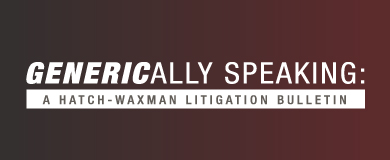- Acumen Powered by Robins Kaplan LLP®
- Affirmative Recovery
- American Indian Law and Policy
- Antitrust and Trade Regulation
- Appellate Advocacy and Guidance
- Business Litigation
- Civil Rights and Police Misconduct
- Class Action Litigation
- Commercial/Project Finance and Real Estate
- Corporate Governance and Special Situations
- Corporate Restructuring and Bankruptcy
- Domestic and International Arbitration
- Health Care Litigation
- Insurance and Catastrophic Loss
- Intellectual Property and Technology Litigation
- Mass Tort Attorneys
- Medical Malpractice Attorneys
- Personal Injury Attorneys
- Telecommunications Litigation and Arbitration
- Wealth Planning, Administration, and Disputes
Acumen Powered by Robins Kaplan LLP®
Ediscovery, Applied Science and Economics, and Litigation Support Solutions
-
June 1, 2022Chambers USA Recognizes Five Robins Kaplan Practice Groups And 17 Lawyers In 2022 Guide
-
June 1, 2022Seasoned Attorney Joins Firm’s Business Litigation Group
-
May 26, 2022Shira Shapiro Named Woman of Promise By The Pearl Society
-
June 3, 202219th Annual Advanced Insurance Law
-
June 9, 2022Building Your Brand: Perspectives and Insights from a Diverse Bar
-
June 10, 2022LGBTQ Legal Services: Transgender Name Change Clinic
-
May 24, 2022Briefly: Seeking Fees and Costs While on Appeal
-
May 19, 202211th Circ. Ban On Service Awards May Inhibit Class Actions
-
May 13, 2022Trademark Applications and the Murky Waters of Subject Matter Jurisdiction
-
June 2, 2022Sandberg Stepping Down as Meta COO After 14 Years
-
June 1, 2022Markets Revert to Recent Form as Pessimism Takes Hold
-
May 27, 2022Unexpectedly Strong Retail Sales Pull Markets Back from the Brink
Find additional firm contact information for press inquiries.
Find resources to help navigate legal and business complexities.
Cephalon, Inc. v. Slayback Pharma Ltd.
The court found that defendants had not met their clear-and-convincing burden of proving that formulation and method-of-treatments patents-in-suit were obvious.
April 27, 2020

Case Name: Cephalon, Inc. v. Slayback Pharma Ltd., No. 17-1154-CFC, 2020 WL 1983730 (D. Del. April 27, 2020) (Connolly, J.)
Drug Product and Patent(s)-in-Suit: Bendeka® (bendamustine hydrochloride); U.S. Patents Nos. 9,265,831 (“the ’831 patent”), 9,572,797 (“the ’797 patent”), 9,144,568 (“the ’568 patent”), 9,597,399 (“the ’399 patent”), and 9,572,887 (“the ’887 patent”)
Nature of the Case and Issue(s) Presented: Bendeka is indicated for the treatment of chronic lymphocytic leukemia (CLL) and indolent B-cell non-Hodgkin lymphoma (NHL). Prior to trial, Defendants stipulated to infringement. The sole issue at trial concerned the validity of the claims of the patents-in-suit, which the court upheld.
Why Cephalon Prevailed: The court found that the formulation patents were not obvious. The asserted claims in those patents recited a non-aqueous liquid composition that contained: (i) bendamustine (or a pharmaceutically acceptable salt thereof); (ii) about 5% to about 10% by volume of the solvent propylene glycol (PG); (iii) the solvent polyethylene glycol (PEG); (iv) one of the following ratios of PEG to PG: about 95:5, about 90:10, about 85:15, about 80:20, and about 75:25; and (v) a stabilizing amount of an antioxidant. Defendants demonstrated that a POSITA was motivated to develop a non-aqueous liquid bendamustine formulation, but they could not establish that a POSITA would have: (i) used PEG and PG solvents; (ii) achieved the PEG:PG ratios; (iii) picked an antioxidant; (iv) implemented the claimed concentrations of bendamustine; (v) or achieved the PG ester stability limitations recited in the asserted claims. The court found that although the evidence of commercial success did not support a finding of non-obviousness, defendants had not shown by clear and convincing evidence that the prior art would have motivated a POSITA to reach the claimed formulations.
The court also found that the method-of-treatment patents were not obvious. The administration claims recited methods of treating CLL or NHL with a liquid bendamustine composition. The court explained that the prior art would have motivated a POSITA to reach the claimed formulation, dose, and dosing schedule, but that a POSITA would not have been motivated to reach the claimed administration times, volumes, and concentrations. The court further provided that plaintiffs’ secondary indicia of non-obviousness—commercial success, long-felt need, skepticism, and praise—did not support a finding of non-obviousness, but nevertheless found that the prior art would not have motivated a POSITA to arrive at the claimed administrations with a reasonable expectation of success.
Related Professionals
Related Publications
Related News
If you are interested in having us represent you, you should call us so we can determine whether the matter is one for which we are willing or able to accept professional responsibility. We will not make this determination by e-mail communication. The telephone numbers and addresses for our offices are listed on this page. We reserve the right to decline any representation. We may be required to decline representation if it would create a conflict of interest with our other clients.
By accepting these terms, you are confirming that you have read and understood this important notice.
